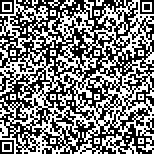| 本文已被:浏览 2010次 下载 2071次 |

码上扫一扫! |
|
|
| 腹型肥胖和全身型肥胖与中医体质类型的关系 |
|
张笑梅1, 朱燕波1, 邬宁茜2, 王琦1, 姚实林3, 虞晓含1, 史会梅1, 姜博1
|
|
1.北京中医药大学, 北京 100029;2.中国中医药出版社, 北京 100029;3.安徽中医药大学学报, 合肥 230038
|
|
| 摘要: |
| [目的] 探求腹型肥胖和全身型肥胖与中医体质的关系,为调整偏颇体质、防治肥胖提供依据。[方法] 采用横断面现场调查法收集江西、安徽两家医院983例健康体检人群数据。中医体质调查采用标准化中医体质量表,应用判别分析法判定体质类型。采用Logistic回归分析探索腹型肥胖、全身型肥胖与中医体质类型的关系。[结果] 未调整混杂因素的模型1和调整混杂因素的模型2均显示痰湿质发生腹型肥胖(OR1=2.92,95%CI=1.76~4.86,P<0.01;OR2=2.74,95%CI=1.63~4.60,P<0.01)和全身型肥胖(OR1=2.22,95%CI=1.36~3.61,P<0.01;OR2=1.89,95%CI=1.14~3.14,P<0.05)的危险度显着增高,而阳虚质发生全身型肥胖(OR1=0.36,95%CI=0.20~0.67,P<0.01;OR2=0.38,95%CI=0.21~0.70,P<0.01)的危险度显着降低。[结论] 痰湿质是发生腹型肥胖和全身型肥胖的主要体质类型。 |
| 关键词: 腹型肥胖 全身型肥胖 中医体质类型 Logistic回归分析 |
| DOI:10.11656/j.issn.1672-1519.2014.10.07 |
| 分类号: |
| 基金项目:国家重点基础研究发展计划(973计划)资助(20 11CB505403);北京市共建项目。 |
|
| Relationships of abdominal obesity, body-type obesity and TCM constitutional types |
|
ZHANG Xiao-mei1, ZHU Yan-bo1, WU Ning-qian2, WANG Qi1, YAO Shi-lin3, YU Xiao-han1, SHI Hui-mei1, JIANG Bo1
|
|
1.Beijing University of Chinese Medicine, Beijing 100029, China;2.China Press of Traditional Chinese Medicine, Beijing 100029, China;3.Journal of Anhui Traditional Chinese Medical College, Anhui 230038, China
|
| Abstract: |
| [Objective] To explore the relationships between abdominal obesity and body-type obesity and TCM constitutional types in order to provide some evidence for adjusting constitutional bias and preventing and treating obesity. [Methods] Through cross-sectional survey, 983 data were collected from physical examination centers of two hospitals in Jiangxi and Anhui. The survey of TCM constitution was performed by standardized Constitution in Chinese Medicine Questionnaire (CCMQ). Use discriminatory analysis method to judge the Individual's constitutional types. Logistic regression analysis was used to explore the relationships of abdominal obesity, body-type obesity and TCM constitutional types. [Results] Both logistic regression model one and two showed: Phlegm-wetness type significantly increased the risk of abdominal obesity(OR1=2.92, 95%CI=1.76~4.86, P<0.01; OR2=2.74, 95%CI=1.63~4.60, P<0.01)and body-type obesity(OR1=0.36, 95%CI=0.20~0.67, P<0.01;OR2=0.38, 95%CI=0.21~0.70, P<0.01), and Yang-deficiency type significantly decreased the risk of body-type obesity(OR1=0.36, 95%CI=0.20~0.67, P<0.01; OR2=0.38, 95%CI=0.21~0.70, P<0.01). [Conclusion] Phlegm-wetness type is the main constitutional types of abdominal obesity and body-type obesity. |
| Key words: abdominal obesity body-type obesity TCM constitutional types Logistic regression analysis |
